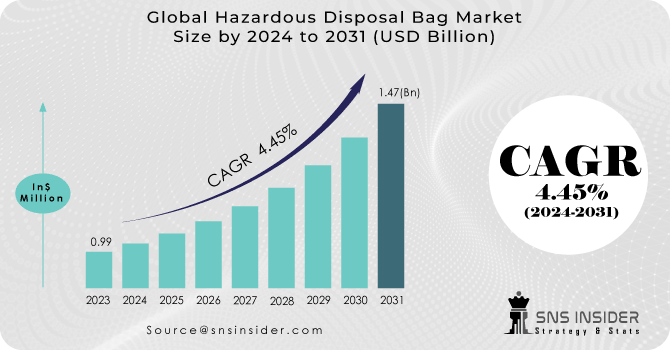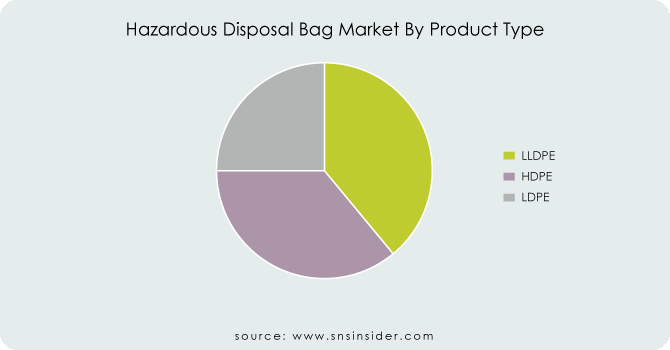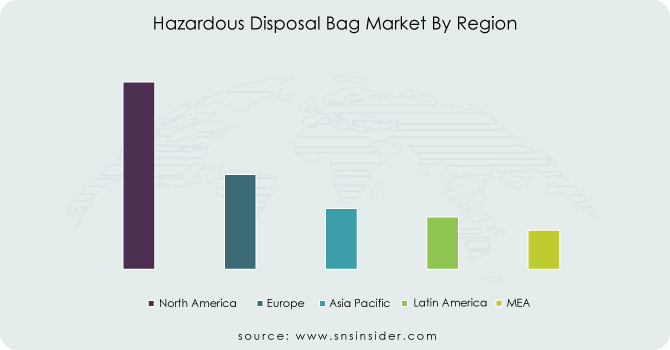Hazardous Disposal Bag Market Report Scope And Overview:
The Hazardous Disposal Bag Market size was valued at USD 0.99 Billion and expected to Reach USD 1.47 Billion by 2031 and grow at a CAGR of 4.45% over the forecast period of 2024-2031.

To get more information on Automotive 3D Printing Market - Request Free Sample Report
The hazardous disposal bag market is experiencing a surge in demand, fueled by a confluence of factors. Hospitals, a major source of hazardous waste, generate a constant need for safe disposal solutions, driving the market for these specialized bags. Public awareness of environmental issues is also playing a role, with people increasingly opting for responsible waste management practices. These bags are vital for the safe collection, transportation, and disposal of biohazardous materials commonly found in hospitals and research labs. Additionally, manufacturers are catering to customer needs by offering durable red bags with clear labels for easy identification and safe handling.
The ability to customize bag sizes and printing options further broadens the appeal of these products. Notably, pandemic significantly increased the use of face masks, PPE kits, and other biomedical equipment, all of which require proper disposal via hazardous disposal bags. Finally, with rising investments in healthcare infrastructure and growing public health awareness, the demand for hazardous disposal bags is expected to maintain momentum in the coming years.
MARKET DYNAMICS
KEY DRIVERS:
-
The demand for hazardous disposable bags in hospitals is surging.
In hospitals and healthcare facilities, special bags known as biohazard waste bags play a crucial role in safe waste disposal. These red-colored bags, emblazoned with biohazard symbols, are used to collect and transport hazardous medical waste. This includes items like contaminated linens, blood products, and materials potentially carrying bodily fluids. By utilizing these designated bags, healthcare workers are shielded from potential exposure to harmful pathogens.
-
Increasing biohazardous waste over world and need for bio-friendly products drive the market.
RESTRAIN:
-
High Cost and easily available alternatives can hamper the market of hazardous disposal bags.
OPPORTUNITY:
-
Public worries about the environment and stricter government waste disposal rules are creating profitable opportunities in the garbage disposal market.
-
New medical procedures and increased chemical transport will likely drive demand for hazardous waste disposal bags in the near future.
As medical technology evolves, new procedures often generate biohazardous waste, such as contaminated materials or bodily fluids. This necessitates the proper collection and disposal of such waste to ensure patient and environmental safety. Biohazard waste bags play a crucial role in this process.
CHALLENGES:
-
Limited knowledge of safe hazardous waste disposal in some countries could hinder market growth.
IMPACT OF RUSSIAN UKRAINE WAR
The ongoing conflict in Ukraine presents a complex scenario for the hazardous disposal bag market. While immediate disruptions to global supply chains and transportation networks pose challenges in the short term, the war's long-term environmental consequences could lead to a significant increase in demand. On one hand, logistical disruptions and a shortage of recyclable materials in Europe could dampen demand in the short term. On the other hand, the war's environmental toll, toxic chemicals from weapons and bombed infrastructure creates a future need for safe disposal of these hazards, potentially increasing demand for specialized hazardous disposal bags in the long run. Ultimately, the market's fate hinges on how effectively these challenges are managed and whether heightened environmental awareness translates to a lasting demand for proper hazardous waste disposal solutions.
IMPACT OF ECONOMIC SLOWDOWN
An economic slowdown's impact on the hazardous disposal bag market is uncertain. While continued industrial activity and stable construction waste suggest ongoing demand, the absence of clear warning signs like a decline in waste volumes makes prediction difficult. The market might be resilient due to the essential nature of hazardous waste disposal, but challenges like wage pressures and supply chain disruptions linger. Ultimately, monitoring waste generation and the broader economy will be key to understanding the true effect of a downturn.
KEY MARKET SEGMENTS
By Product Type
-
HDPE
-
LDPE
-
LLDPE
LLDPE (linear low-density polyethylene) leads the market for hazardous disposal bags, capturing a substantial 39% market share. HDPE (high-density polyethylene) follows closely behind, holding a respectable 36% share.

Get Customized Report as per your Business Requirement - Request For Customized Report
By Application
-
Residential
-
Commercial
-
Industrial
-
Hospital
-
Others
The hospital segment is projected to hold the largest market share approximately 40% for hazardous disposal bags throughout the forecast period. This dominance is driven by two key factors are a rising volume of hazardous waste generated by hospitals and stricter government regulations mandating the use of these bags to prevent the spread of infectious diseases.
By Distribution Channel
-
Hypermarkets
-
Supermarkets
-
Online Retail
-
Convenience Stores
REGIONAL ANALYSIS
The hazardous waste disposal bag market is currently dominated by North America with market share 43.2%. Stringent government regulations regarding waste disposal and a preference for these products over traditional methods have fueled this dominance. However, the Asia Pacific region is poised for significant growth in the coming years. Rapid urbanization in this region is straining existing waste management systems, leading to a rising demand for proper hazardous waste disposal solutions. North America's market is further strengthened by a growing preference for disposable and eco-friendly biohazard bags. Overall, the future of the hazardous waste disposal bag market looks bright, with both North America and Europe expected to see continued growth driven by these factors.
Asia Pacific (APAC) and Middle East & Africa (MEA) regions, particularly countries like India, China, and the GCC, are expected to witness the fastest growth in the hazardous disposal bag market. This surge is driven by two key factors such as rapid urbanization straining existing waste management systems and growing government initiatives promoting hygiene practices in the APAC region. This has led to a rise in demand for accessible yet internationally compliant hazardous disposal bags offered by regional manufacturers, further intensifying competition within the industry. Despite this shift, demand is expected to remain high in established markets like North America, South America, and Europe, fueled by a continued preference for disposable and bio-friendly options.

REGIONAL COVERAGE:
North America
-
US
-
Canada
-
Mexico
Europe
-
Eastern Europe
-
Poland
-
Romania
-
Hungary
-
Turkey
-
Rest of Eastern Europe
-
-
Western Europe
-
Germany
-
France
-
UK
-
Italy
-
Spain
-
Netherlands
-
Switzerland
-
Austria
-
Rest of Western Europe
-
Asia Pacific
-
China
-
India
-
Japan
-
South Korea
-
Vietnam
-
Singapore
-
Australia
-
Rest of Asia Pacific
Middle East & Africa
-
Middle East
-
UAE
-
Egypt
-
Saudi Arabia
-
Qatar
-
Rest of Middle East
-
-
Africa
-
Nigeria
-
South Africa
-
Rest of Africa
-
Latin America
-
Brazil
-
Argentina
-
Colombia
-
Rest of Latin America
Key players
Major players in the Hazardous Disposal Bag Market are REMONDIS Medison GmbH, Clean Harbors, Inc., Biomedical Waste Solutions, LLC, Republic Services Inc., Suez Environment S.A., Sharps Compliance, Inc., Veolia Environment S.A., Daniels Sharp smart Inc., Stericycle Inc., Waste Management Inc. and others.
RECENT DEVELOPMENT
-
On August 24th, 2022, Aurora Capital Partners acquired Sharps Compliance Corp., a national leader in medical, pharmaceutical, and hazardous waste management solutions.
-
In February 2020, Stericycle Inc. struck a deal to sell its Domestic Environmental Solutions business (excluding healthcare and unused consumer pharmaceutical take-back services) to Harsco Corporation for $462.5 million in cash. The final sale price may be adjusted based on customary terms outlined in the agreement
| Report Attributes | Details |
|---|---|
| Market Size by 2031 | US$ 1.47 Billion |
| CAGR | CAGR of 4.45 % From 2024 to 2031 |
| Base Year | 2023 |
| Forecast Period | 2024-2031 |
| Historical Data | 2020-2022 |
| Report Scope & Coverage | Market Size, Segments Analysis, Competitive Landscape, Regional Analysis, DROC & SWOT Analysis, Forecast Outlook |
| Key Segments | • By Product Type (HDPE, LDPE, LLDPE) • By Application (Residential, Commercial, Industrial, Hospital, Others) • By Distribution Channel (Hypermarkets, Supermarkets, Online Retail, Convenience Stores) |
| Regional Analysis/Coverage | North America (US, Canada, Mexico), Europe (Eastern Europe [Poland, Romania, Hungary, Turkey, Rest of Eastern Europe] Western Europe] Germany, France, UK, Italy, Spain, Netherlands, Switzerland, Austria, Rest of Western Europe]), Asia Pacific (China, India, Japan, South Korea, Vietnam, Singapore, Australia, Rest of Asia Pacific), Middle East & Africa (Middle East [UAE, Egypt, Saudi Arabia, Qatar, Rest of Middle East], Africa [Nigeria, South Africa, Rest of Africa], Latin America (Brazil, Argentina, Colombia, Rest of Latin America) |
| Company Profiles | REMONDIS Medison GmbH, Clean Harbors, Inc., Biomedical Waste Solutions, LLC, Republic Services Inc., Suez Environment S.A., Sharps Compliance, Inc., Veolia Environment S.A., Daniels Sharp smart Inc., Stericycle Inc., Waste Management Inc. |
| Key Drivers | • The demand for hazardous disposable bags in hospitals is surging. • Increasing biohazardous waste over world and need for bio-friendly products drive the market. |
| Restraints | • High Cost and easily available alternatives can hamper the market of hazardous disposal bags. |

